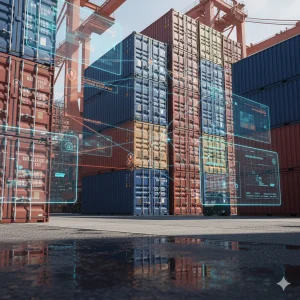In today’s hyper-connected world, reputation moves faster than regulations.
A negative news article, a leaked investigation, or an online report, even before formal charges are filed, can expose your business to financial, legal, and reputational fallout.
Yet many institutions still rely on static or outdated sanctions lists or limited KYC data, ignoring the broader public domain where risk signals often emerge first.
That’s why adverse media screening has become a non-negotiable part of any modern risk framework. It’s not just a compliance tool; it’s an early warning system. And in 2025, no institution can afford to overlook it.
What is Adverse Media Screening?
Adverse Media Screening, also known as negative news screening, is the process of identifying and analyzing publicly available information that may indicate a customer or entity is exposed to financial crime. It goes far beyond checking if someone appears on a checklist.
Adverse media can include:
- News articles from local and global news outlets
- Investigative journalism and whistleblower reports
- Regulatory announcements and enforcement updates
- Court records, legal filings, and public sanctions leaks
- Blogs, forums, and other structured or unstructured data sources
The goal is to spot risk signals early, often before formal action is taken by regulators or law enforcement. Adverse media screening gives you visibility into emerging threats that might otherwise stay hidden in plain sight.
Why It’s a Core Part of Today’s Risk Programs
Regulators globally are clear: organizations are expected to go beyond static databases and demonstrate ongoing awareness of public domain risk indicators.
Here’s why adverse media screening is essential in 2025
It Catches Risks Before the Watchlists Do
By the time someone appears on a government watchlist, the damage may already be done. Adverse media often highlight emerging risks before regulators take action, allowing institutions to proactively investigate, escalate, or offboard. Think of it as a frontline filter, not a fallback mechanism.
It Enhances Risk-Based Decision Making
Adverse media signals don’t always trigger an automatic “deny”. But they do inform whether enhanced due diligence (EDD) is needed, whether to pause onboarding, or whether to increase transaction monitoring. It’s a core part of contextual risk evaluation, not a ‘box-ticking’ step.
It’s Expected by Regulators in the US, UK & EU
From the FCA’s SYSC requirements to 6AMLD and FinCEN’s CDD rule, global regulators increasingly expect firms to demonstrate how they screen for reputational exposure, and hw media findings are factored into decisions. “We didn’t check the news” is no longer a valid defense.
It Protects Brand Trust
Negative press doesn’t just hurt compliance; it damages investor confidence, customer retention, and partner trust. Being linked to a scandal, even indirectly, can erode years of brand equity. Adverse media screening helps safeguard your reputation before it’s on the line.
From Batch Checks to Continuous Monitoring
The traditional approach? Run an adverse media check at the time of onboarding, and maybe once a year after that.
The modern approach? Always-on Monitoring.
With global news cycles moving 24/7 and risk exposure shifting in real-time, institutions are now adopting:
- Continuous rescreening of all medium and high-risk customers
- Real-time alerting when new articles or events are linked to existing clients
- Dynamic relevance scoring, so teams can prioritize meaningful results over noise.
This shift isn’t just about compliance; it’s about speed to insight.
What to Look for in an Adverse Media Solution
Not all screening tools are created equal. Here’s what modern compliance teams need:
- Global Coverage: Thousands of structured and unstructured sources, updated in real-time
- Noise Reduction: NLP and machine learning to filter out irrelevant or duplicate content
- Contextual Tagging: Categorization by risk type (fraud, corruption, ESG, etc.)
- Integrated Workflows: Embedded into onboarding and case management systems
- Audit Readiness: Full traceability of every alert, decision, and dismissal
IDYC360 – Adverse Media Screening Experts
At IDYC360, we understand that adverse media screening is no longer optional; it’s foundational. That’s why we’ve built an AI-powered solution designed to give compliance teams the clarity, speed, and global reach they need to stay ahead of reputational risk.
Our platform delivers:
- Extensive media and regulatory source coverage across 240+ jurisdictions, spanning structured databases and unstructured news sources, both local and global.
- AI-driven content filtering that applies natural language processing (NLP) to eliminate duplicates, flag relevance, and reduce false positives.
- Risk-category tagging to help teams differentiate between financial fraud, corruption, ESG violations, and other key threat types.
- Real-time alerting and escalation workflows that automatically notify your team the moment new, relevant media links onboarded to the entity.
- Configurable screening thresholds aligned with your internal policies, so you’re in control of how risk is identified and prioritized.
- Full audit trails and decision logs for every alert, including timestamps, media source links, analyst notes, and disposition history.
- Whether you’re screening individuals, business entities, or entire customer portfolios, IDYC360 makes adverse media part of your real-time intelligence framework, not a separate, siloed process.
And with seamless API access, our tools integrate directly into your existing compliance infrastructure, so you get the insights you need without compromising speed or scalability.
Final Thoughts
In 2025, adverse media isn’t an add-on. It’s a baseline.
From onboarding to ongoing due diligence, integrating media screening into your AML and risk workflows means fewer surprises, faster reaction times, and a stronger institutional defense, preventing issues from escalating into formal investigations.
Ready to Stay
Compliant—Without Slowing Down?
Move at crypto speed without losing sight of your regulatory obligations.
With IDYC360, you can scale securely, onboard instantly, and monitor risk in real time—without the friction.











